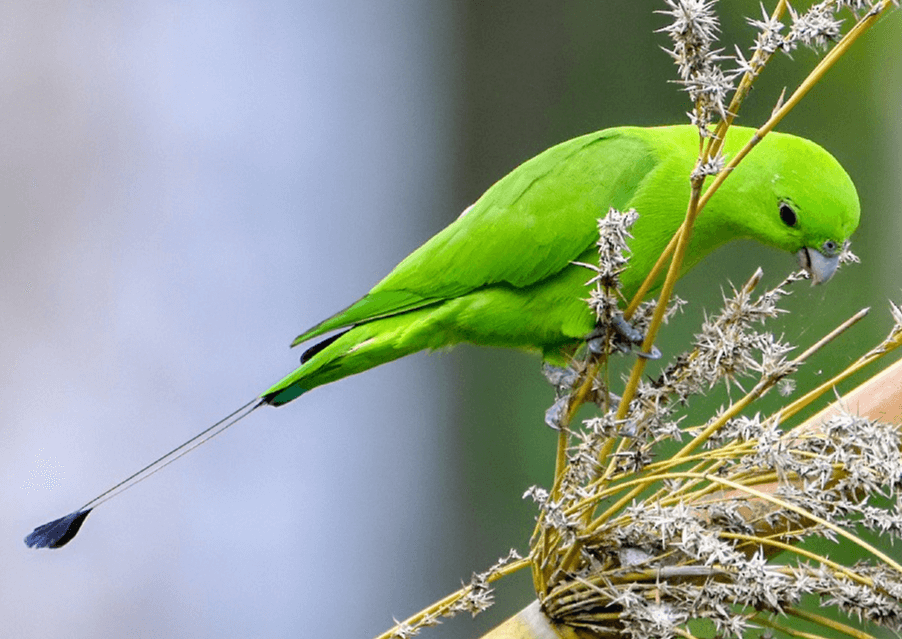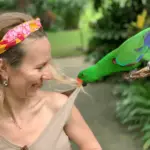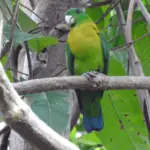
Prioniturus luconensis Scientific name definitions
- EN Endangered
- Names (15)
- Monotypic
Green Racquet-tail 29 cm. Bill pale greyish; yellowish-green on head and underparts, slightly darker on wings and tail, with spatulas blackish and lateral feathers above dark blue, tipped black. Female less yellowish. Immature lacks spatules.
Systematics History
Part of the P. discurus clade (see that species). Monotypic.
Subspecies
Monotypic.
Distribution
N & C Luzon and Marinduque, in N Philippines.
Habitat
Canopy of primary forest and edge, occasionally foraging out in open cultivated areas, in lowlands and foothills, e.g. in Sierra Madre at 300–700 m. Recorded recently from selectively logged and degraded forest, but ability to persist in such habitat unclear.
Diet and Foraging
Fruit, particularly bananas, flowers and seeds of growing corn, and rice.
Sounds and Vocal Behavior
When perched, utters several harsh nasal screeches, often metallically modulated at the end, e.g. “rrraaa-wheeoleeoah”. Also short grating screeches and higher-pitched squeaky notes.
Breeding
Young obtained in May.
Conservation Status
ENDANGERED. CITES II. A BirdLife “restricted-range” species, endemic to the Philippines. Now appears to be restricted to Luzon: there are no recent records from Marinduque, where it is feared extinct.
Once common, the combination of habitat loss and trade has rendered this species very uncommon and local, with a single good population protected, at Subic Bay Naval Forest Reserve.
Recorded at only seven out of 29 historic sites in the last 10 years; although possibly a due to poor census coverage, this may be a real range contraction.
Apparently extirpated from former strongholds such as Quezon National Park, Bataan Natural Park, and Angat Dam. Based on surveys in 2009–2010, the total population is estimated to comprise fewer than 2500 mature birds with no more than 250 in each sub-population.
Taking into account the effects of continued trapping and habitat degradation, the species was uplisted from Vulnerable to Endangered in 2014.




















